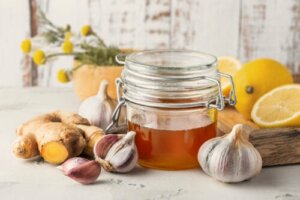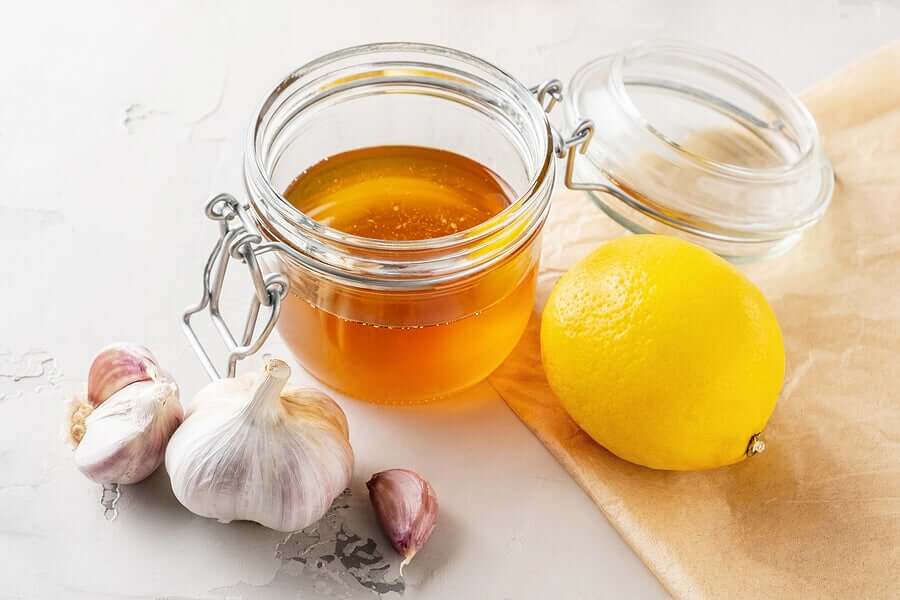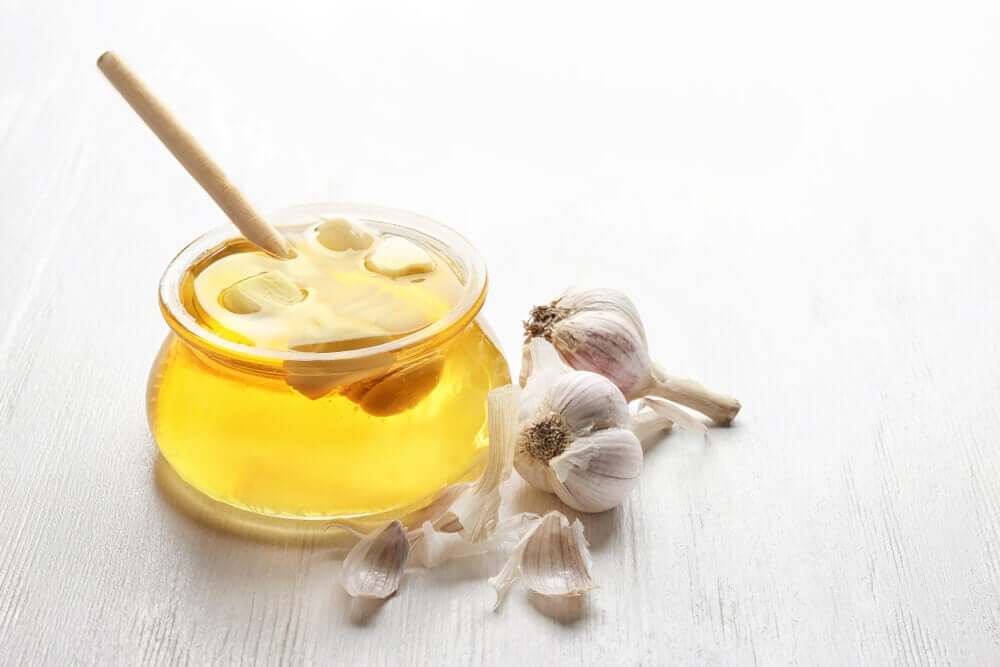How to Make Garlic Honey to Fight Respiratory Problems

According to popular belief, garlic honey is a home remedy with antibacterial properties that can help alleviate certain discomforts and fight respiratory diseases and, in particular, those that have a bacterial origin and are common in the colder seasons of the year.
Below we’ll tell you more about its health benefits and other interesting facts, as well as the recipe to prepare it at home.
Sore throat, what to do?
If you have a sore throat, discomfort when swallowing saliva and food, the best thing to do is to consult your doctor or a trusted pharmacist.
Once you know the origin of the sore throat, you should follow the indications given by the professionals and, at the same time, take care of your lifestyle: Eat well, increase your consumption of fresh fruits and drink plenty of water.
Additionally, if your doctor authorizes it, you could consider resorting to certain home remedies such as garlic honey to fight respiratory problems.
Why honey and garlic?

As we mentioned at the beginning, both honey and garlic are attributed with antibacterial and anti-inflammatory properties. Therefore, many beleive that by mixing them in the same preparation, you can obtain a remedy suitable for treating and relieving throat infections.
It should be clarified that, although these properties are attributed to them, this doesn’t mean that they really have them. In fact, several investigations have been carried out and they all agree that honey has potential due to its antioxidant content, under certain conditions, but it’s not an infallible remedy, much less against bacteria.
Garlic, at the same time, is a food that, due to its allicin content, has been overrated. Fortunately, the myths and truths about garlic have already been published.
According to data from Spain’s nurtitional foundation (FEN),
You might like: The Benefits of 7 Days of Honey and Garlic
- Garlic’s a food that contains proteins, iodine, phosphorus, potassium, vitamin B6, and sulfur compounds (among the most famous is allicin).
- In popular circles, it’s often said that, in order to obtain all its benefits, it is best to consume it fresh and raw.
- However, the contributions that the consumption of garlic cloves can provide, even on a daily basis, aren’t significant enough to provide specific benefit.
- Honey’s a food that contains antioxidants, sugars, amino acids, tannins, glucose and alkaloids. It’s a very nutritious natural food that offers various therapeutic possibilities.
- Although poeple often combine it with lemon and ginger, you can also combine it with garlic for the same type of purpose: To relieve sore throat.
How to make garlic honey to fight respiratory problems

Read more: Improve Your Health With This Baking Soda Honey Mixture
Ingredients
- 3 heads of garlic
- 1 cup of organic honey (335 grams)
Instructions
- Cut the garlic cloves into several slices or pieces, and place them in the glass jar.
- Add the honey to the garlic and store in a cool, dark place.
- Steep for one week, then you can start to consume it.
When should you consume it?
According to popular beliefs, it may be advisable to consume this remedy in case of flu, dry cough, cold, throat irritation, and respiratory tract congestion.
Although there’s no proof that the nutrients in garlic and honey are effective in fighting bacteria, it’s clear that the texture of garlic honey can help soothe the throat and relieve discomfort. Therefore, it doesn’t cure the infection, but it can contribute to relief.
Never replace the treatment your doctor prescribes with this remedy. And, if you decide to consume it, try to maintain moderation to avoid excessive calorie intake. Don0t forget that, although it’s delicious, honey is very rich in calories.
All cited sources were thoroughly reviewed by our team to ensure their quality, reliability, currency, and validity. The bibliography of this article was considered reliable and of academic or scientific accuracy.
- Ramírez, H. R., Castro, L. N., & Martínez, E. (2016). Efectos Terapéuticos del Ajo (Allium Sativum). Salud y Administración. https://doi.org/10.1007 / s00590-016-1762-2
- San Miguel, J., & Martín, N. (2005). Tintura de ajo en el tratamiento de la hipertensión y la cefalea. Rev Cubana Enfermer.
- Gómez, L. J. G., & Sánchez-Muniz, F. J. (2000). Revisión: Efectos cardiovasculares del ajo (Allium sativum). Archivos Latinoamericanos de Nutricion. https://doi.org/10.1080/09528820500472530
This text is provided for informational purposes only and does not replace consultation with a professional. If in doubt, consult your specialist.








